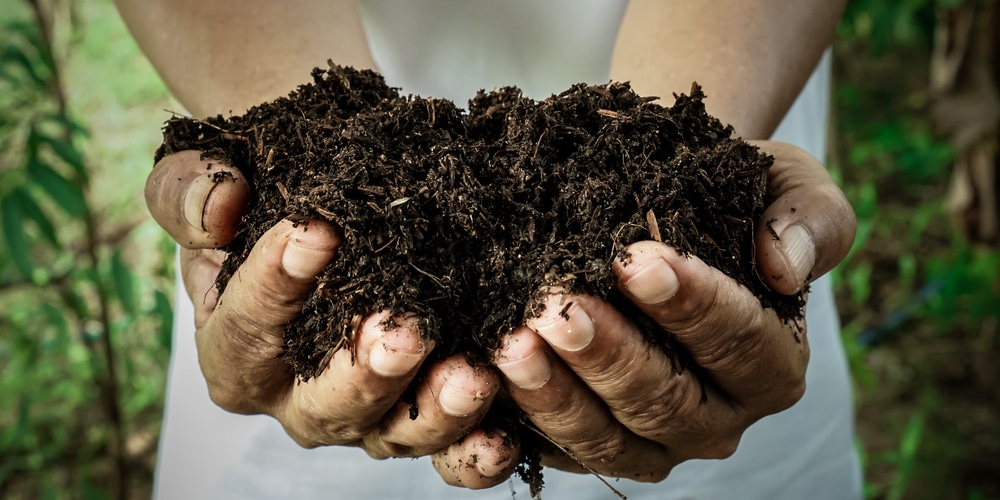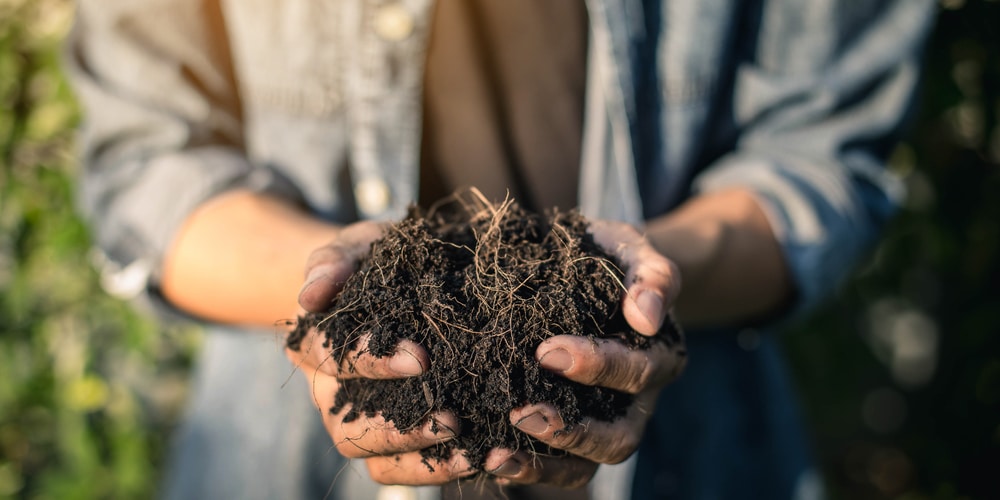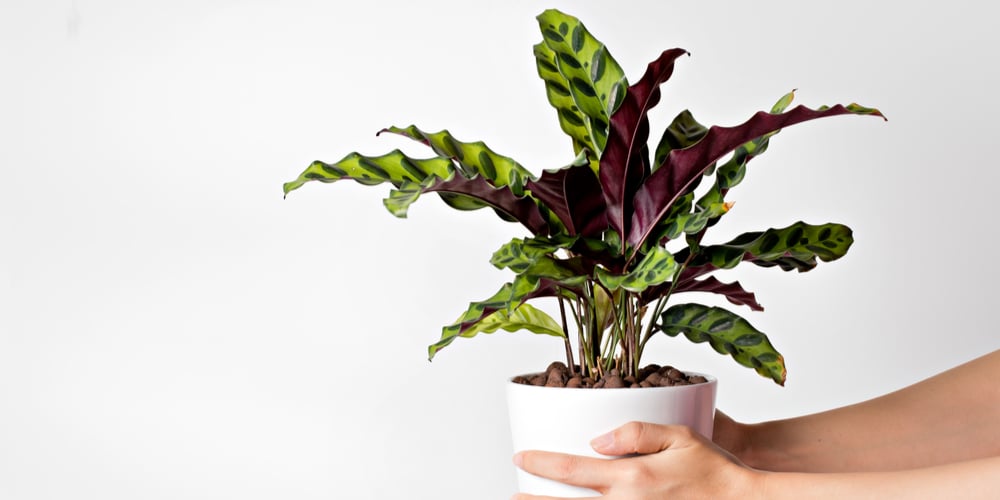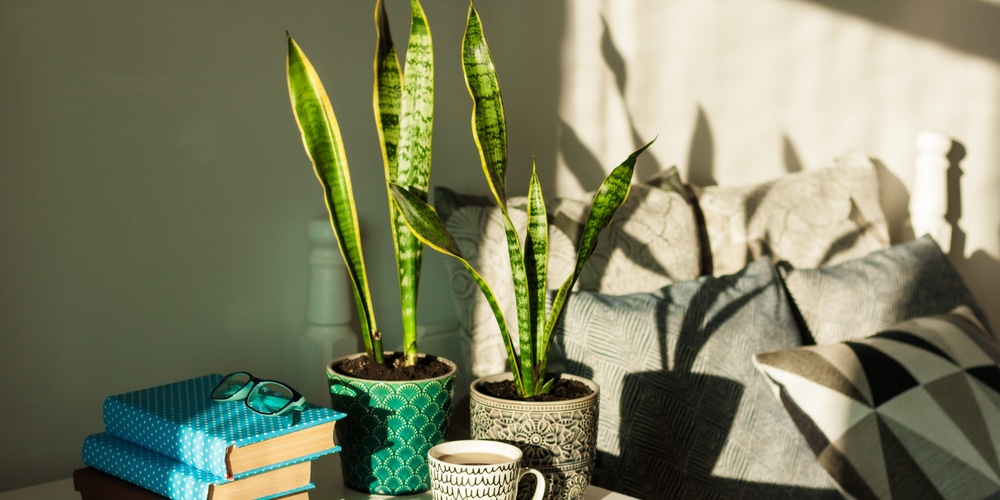Composting is a great way to reduce your carbon footprint and provide nutrient-rich soil for your plants. They’re commonly used in backyard and community gardens as a simple yet effective way to improve soil health and plant growth. This has left some owners wondering, can compost also be used on house plants?
What’s in a Compost and What Makes It Good for Plants?

Generally speaking, compost is made up of different types of organic matter, like leaves, grass clippings, and fruit and vegetable scraps. These materials break down and decompose over time, creating a nutrient-rich soil amendment.
In fact, compost is often referred to as “black gold” because of its high levels of essential nutrients, like nitrogen, potassium, and phosphorus. These nutrients are vital for plant growth and play an important role in photosynthesis, water uptake, and root development.
Can You Put Compost in House Plants?
Because most compost contains food scraps, many homeowners are concerned about attracting pests, like rodents, ants, and fruit flies. Adding them to outdoor and backyard gardens is one thing, leaving some people normally worried about their safety when introducing these organic matters inside their homes.
The good news is that, as long as you’re using high-quality compost and taking the necessary precautions, there’s no reason why you can’t add it to your indoor plants.
When used correctly, compost can help improve drainage and aeration in the soil while also increasing its water-holding capacity. This is especially beneficial for plants grown in containers or indoor pots, as they’re more susceptible to drought stress.
Things to Remember When Using Compost on Indoor Plants
If you’re planning on adding compost to your indoor plants, know you’re free to do so. Similar to using any type of fertilizer, you should keep a few things in mind to ensure the health and safety of your indoor plants.
Here are a few things to remember when using compost on house plants:
Use Smaller Amounts
If you’ve never used compost on your indoor plants before, it’s always best to start with smaller amounts. This will help you gauge how your plants react to the added nutrients and organic matter. It’s also a good way to avoid any potential problems, like over-fertilization or root rot.
Apply Compost Evenly
Unlike other types of fertilizer, compost doesn’t need to be applied directly to the roots of your plants. Instead, you can simply add it to the topsoil and allow the plant to uptake the nutrients as needed. Just be sure to apply it evenly around the base and water it thoroughly afterward.
Use a Light Hand
Some compost may be too strong for your indoor plants, especially if they’re young or delicate. Always use a light hand when applying it to the soil to avoid any problems. You can also add some extra water to dilute the nutrients and help reduce the risk of over-fertilization.
Adding some perlite, vermiculite, or sand to your compost can also help lighten the mix and make it easier for your plants to take up the nutrients.
Monitor Plant Growth
To help ensure the health of your plants, it’s important to monitor their growth after adding compost to their soil. This will help you determine if they’re receiving the right amount of nutrients and organic matter. If you notice any problems, like yellowing leaves or stunted growth, be sure to adjust the amount of compost you’re using accordingly.
You may also use a compost tea, which is a more diluted solution made by steeping compost in water. This can be a good option for plants that are sensitive to high levels of nutrients.
How to Use Compost Indoor Plants
Now that you know a little bit more about using compost on indoor plants, it’s time to get started. If you’re not sure where to begin, here are a few tips to help you get started:
Pick the Right Compost
Not all composts are created equal. You can compost your own, which is usually the best option. However, if you don’t have the time or space to do so, you can also purchase it from a local nursery or garden center.
When choosing a compost, be sure to pick one that’s high in organic matter and low in salt. Salt can be damaging to plants, so you’ll want to avoid any that are high in sodium. You should also avoid any that contain animal products, like manure, as these can attract pests.
Prepare the Soil
Soil preparation is key to success when using any type of fertilizer, including compost. Be sure to loosen the topsoil around your plants before adding the compost. This will help ensure that the nutrients can reach the roots more easily.
Put in the Right Amount
How do you determine how much compost to use on your indoor plants? A good rule of thumb is to start with one part compost to ten parts soil. You can then adjust the ratio as needed based on the results you see.
Apply Compost at the Right Time
The good news is that you can apply compost to your indoor plants at any time of year. Since indoor temperatures are mostly consistent, there’s no need to worry about the compost getting too hot or cold.
However, you should avoid applying it during times of stress, like when your plants are flowering or fruiting. This can cause problems with pollination and lead to lower yields.
Can you Put Compost in House Plants: Final Thoughts
All kinds of plants, whether grown indoors or outdoors, can benefit from the addition of compost to their soil. It takes a bit more care and attention to use compost on indoor plants, but it’s well worth the effort.
By following the tips above, you’ll be able to encourage healthy growth, and while your plants are getting the nutrients they need to thrive in their potted environment.


